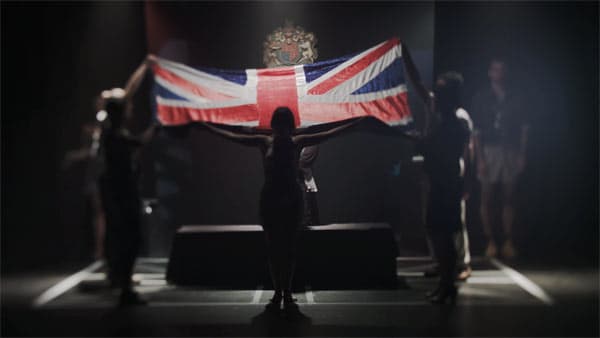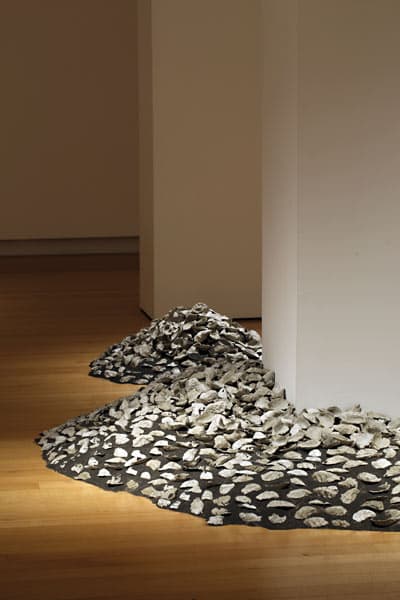
Artist:
Megan Cope
My practice explores the relationship between environment, geography and identity.
I often use maps in my work, drawing on toponymy (the study of place names) to probe myths and methodologies around colonisation. Renaming places and replacing Aboriginal names was an assertion of colonial power and dominance, as was the continued mining and excavation of Indigenous sacred sites. It renders a landscape void of markers once used to navigate through Country, to find our way home.
By transposing names and places significant to Aboriginal groups onto old military and topographical maps that depict the land devoid of Aboriginal occupation, I seek to reveal multilayered and multiple histories and perspectives. Recreating traditional markers in my sculptural installations, such as middens that were once unmistakable in our country, similarly seeks to highlight alternative historical narratives and to challenge people’s notions of ownership and connection to the land. In this way my work aims to re-image and remap history and recreate our sense of place and identity.
My work is inspired by the stories of my people and our Country, coastal North Stradbroke Island (Minjerribah), and the sense of connection we have to the landscape. When I’m there I feel like I am back to where I belong, I am welcome there. It is our place, it will always be our place and being there reminds me of who I am and where I am going.
Photo: Pat Scala/Fairfax Media

Megan Cope
(Quandamooka people)
The Blaktism 2014
Purchased 2016 in recognition of the 50th Anniversary of the 1967 Referendum

Megan Cope
(Quandamooka people)
RE FORMATION 2017
Courtesy of the artist and This Is No Fantasy,
Search for works by this artist in the national collection.

Megan Cope (Quandamooka people)


